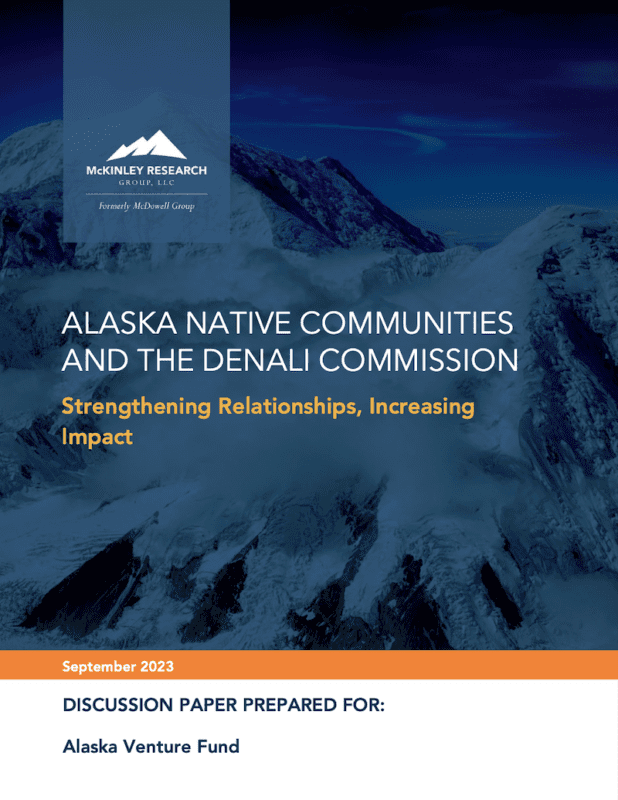Prepared by McKinley Research Group for Alaska Venture Fund
Context and Purpose
This year marks 25 years since the establishment of the Denali Commission in federal law. The quarter-century mark is a timely opportunity for big-picture reflection on the commission’s structure and approach, particularly in light of increasing recognition of Alaska Native Tribes and the rare opportunity presented by significant recent federal appropriations. This discussion paper shares ideas gathered through interviews with 30 Alaskans from a range of Alaska entities and regions.
Findings
Unique Role, Unique Powers
The Denali Commission is the only federal agency with a mission focused on rural Alaska needs, and virtually all interviewees saw the commission as a valuable tool. They noted in particular its unique flexibilities:
- Ability to turn lapsing money into “no-year” money, allowing for better project pacing
- Ability to commingle different funding streams
- Ability to use its funds as “nonfederal match” for other federal funds
- Ability to “right-size” requirements to better meet needs of rural Alaska
Barriers to Optimal Partnership
While the commission is a valuable asset, interviewees cited several limitations and barriers hindering optimal partnership and impact:
- Limited funding – the commission’s funding has dropped from over $100 million annually to about $15 million in recent years
- Limited awareness – as funding has fallen, awareness in rural Alaska of the commission’s work has declined
- Limited public or Tribal engagement processes to ensure meaningful participation in decision-making
- Limitations of Commission composition – the 7 commissioners specified in statute do not reflect its core constituency and have significant non-commission responsibilities
- Competitive funding mechanisms that can reward grant prowess rather than need
- Reluctance by other federal agencies to partner with the Commission due to institutional resistance to change and lack of awareness
Ideas for Boosting Tribal and Rural Partnership
The following ideas shared by interviewees are not prioritized or vetted, and some are alternative ideas for approaching the same challenge:
Structure
- Rethink Commission composition
- Expand use of advisory committees
Engagement and Outreach
- Institute a consultation process
- Solicit public input on workplan
- Increase the number of Alaska Native staff
- Consider details
- Expand outreach and social media presence
- Regionalize efforts
- Increase transparency
- Track community assets and needs
Distribution of Funds
- Reduce use of competitive processes
- Tranche money and adjust requirements
- Be flexible
- Simplify grant processes
- Consider compacting
- Use money as match
Supports
- Provide investment-level technical assistance
Conclusion
As the sole Alaska-centric federal agency, the Denali Commission is uniquely situated to help close the gap between intent and reality in meeting the needs of rural Alaska. A new influx of federal funds offers generational opportunities that a reinvigorated Denali Commission can help realize. Optimizing the opportunities will depend on strong partnerships:
- Between the commission and communities it serves
- Between the commission and other federal agencies
While effective partnership between the Denali Commission and those it serves is critical, the commission also needs adequate funding to be effective. Its unique role and unique flexibilities make the commission an ideal partner for other federal agencies looking to make a positive impact in rural Alaska.
